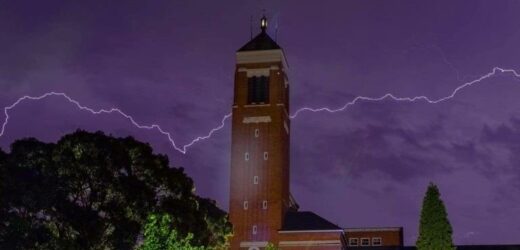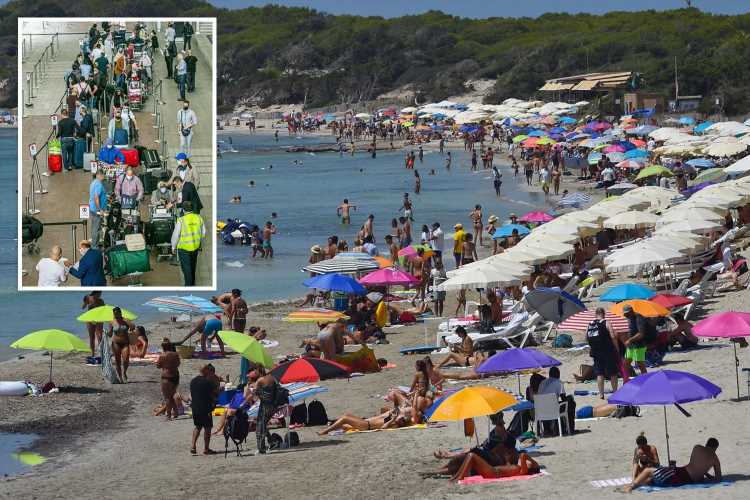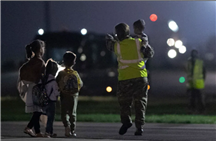Victorians have been told to brace for more extreme weather after a massive storm front tore through the state on Thursday, bringing flash flooding to communities from Mildura to Geelong.
More than 4000 houses across the state remained without power on Friday morning, as crews began the clean-up process.
Flash flooding in Geelong West, where residents rushed to move their cars to higher ground.Credit:Chris Zappone
Geelong and the Bellarine Peninsula bore the brunt of the storm on Thursday night with torrential rain causing widespread flooding.
Images shared on social media showed floodwater up to the bumper of cars parked in the southern suburb of Belmont and parts of Geelong’s Shannon Avenue underwater.
Residents in West Geelong reported rushing to move their cars to higher ground to avoid getting caught in floodwaters as the cloudburst happened after 8pm.
Weather stations in Geelong recorded falls of 38 millimentres in an hour, while the suburb of Moolap was drenched with almost 29 millimetres of rain in 30 minutes.
Emergency services issued a watch and act alert for the state’s western and central regions and parts of metropolitan Melbourne just before 8pm on Thursday, amid fears thunderstorms across those areas could produce destructive winds and large hail through the evening.
A watch and act alert for flash flooding was also issued for Geelong about 9.20pm, urging people to stay indoors. Geelong Racecourse recorded nearly 39 millimetres of rain between about 7pm and 9pm.
The warnings were cancelled after the threat of severe thunderstorms eased on Friday morning, but the Bureau of Meteorology warned serious storms could redevelop over Victoria later in the day.
“Thunderstorms are still occurring about western Victoria, although they are not expected to be severe,” the bureau said.
“The situation will continue to be monitored and further warnings will be issued when necessary.”
Swan Hill in the state’s north was lashed with gusts of up to 133 kilometres per hour about 4.45pm on Thursday, with gusts of 139 kilometres per hour recorded in Horsham 20 minutes later.
Lightning strikes in Glen Waverley during the storm on Thursday.Credit:Kym Wallis
Mildura, in the state’s north-west, recorded 80 millimetres of rain in the 24 hours to Thursday morning, with 69 millimetres falling in just two hours, after thunderstorms developed near the border of South Australia and Victoria on Wednesday night.
The weather bureau said this made Thursday the wettest January day on record for the city.
In the 12 hours to about 9.50pm on Thursday, State Emergency Service volunteers responded to 506 calls for help across the state. Of those, 252 were still active by that time.
Many of the calls, 190, were flood-related, while 151 were for trees down, and 137 were for building damage.
The busiest unit was South Barwon, with 120 requests for assistance, followed by Geelong with 41, and Sorrento with 37. There were reports of structures across the state having been struck by lightening, but no calls for SES help to those incidents.
With Cassandra Morgan
Earlier on Thursday, SES agency commander David Tucek said the service responded to more than 100 requests for assistance in Mildura, and more than 350 statewide in the 24 hours to about 2pm on Thursday, most of them for flash flooding.
Melbourne is forecast to receive up to 35 millimetres of rain on Friday, with thunderstorms likely to develop around midday and continue through to the afternoon and evening.
SES agency commander David Tucek said flash flooding remained a risk, with a chance of intense rainfall, large hail and damaging winds in central Victoria on Friday.
“It only takes 15 centimetres [of water] to float a small car and at that point you lose control; you’ll be swept off the road into deeper water, and then you’ll have some real trouble,” he said.
“It is life-threatening, and it is a great risk, so do not do that.”
The thunderstorms are the result of high levels of moisture in the air created by a tropical air mass from northern Australia, which has brought muggy weather conditions to Melbourne more akin to those in far north Queensland than Victoria.
A guide to the environment, what’s happening to it, what’s being done about it and what it means for the future. Sign up to our fortnightly Environment newsletter here.
Most Viewed in National
From our partners
Source: Read Full Article




